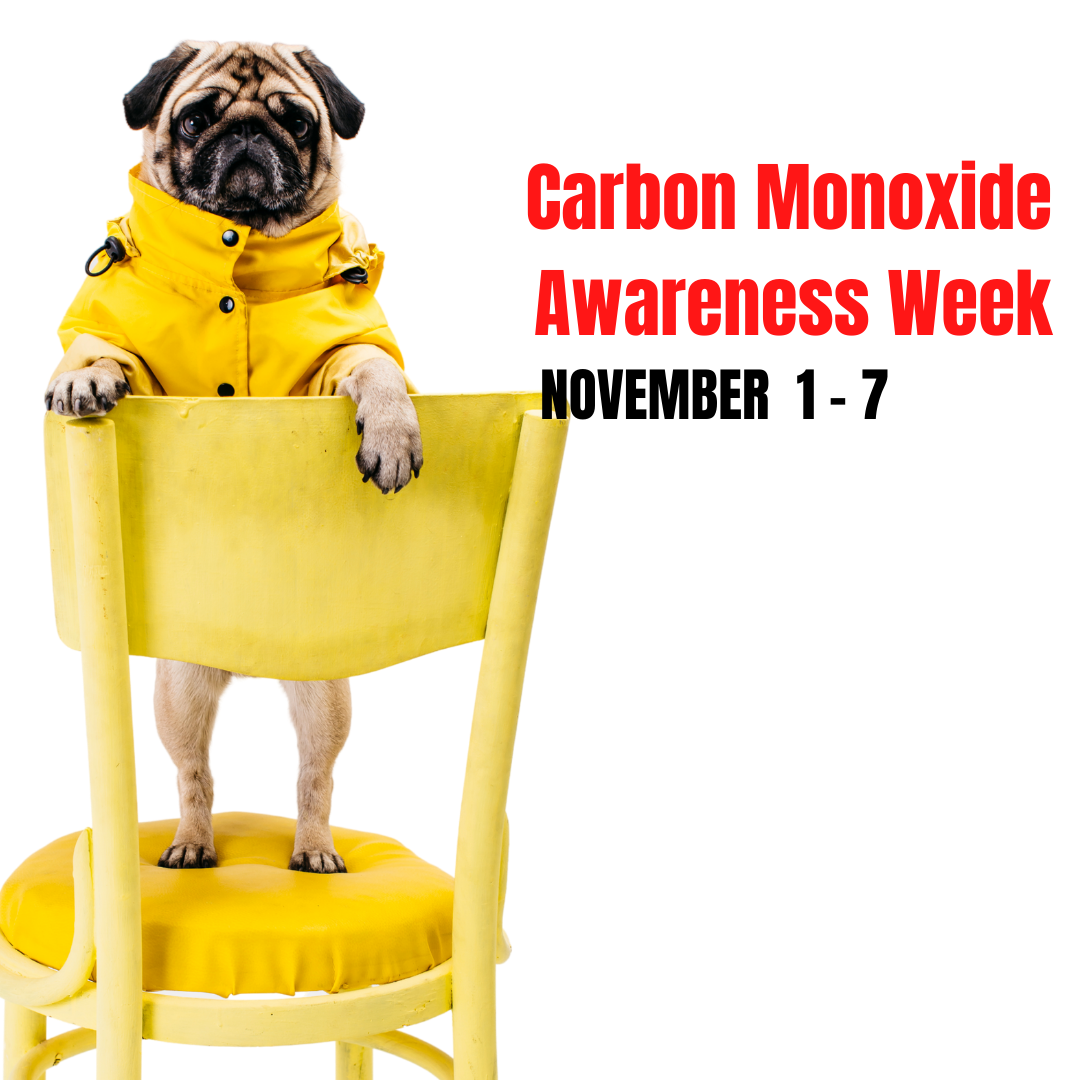2021 Carbon Monoxide Awareness Week

NEWS RELEASE
Ontario Marks Carbon Monoxide Awareness Week
An important reminder about keeping safe and preventing the “silent killer” in homes
November 1, 2021
Solicitor General
TORONTO — As part of Carbon Monoxide Awareness Week, happening November 1-7, Ontario’s Office of the Fire Marshal is reminding Ontarians about the risks of carbon monoxide and the important steps to take to avoid exposure in their homes.
“Carbon Monoxide Awareness Week is an ideal opportunity to think about carbon monoxide safety and take the necessary actions to keep safe,” said Solicitor General Sylvia Jones. “Check your appliances, know what symptoms to look for in case your family is exposed to carbon monoxide, and be sure to test your alarms regularly to make sure they are functioning as needed.”
Carbon monoxide alarms are required in all Ontario homes that have a fuel-burning (wood, oil, natural gas, propane) appliance, fireplace or an attached garage. This includes appliances that produce carbon monoxide such as furnaces, water heaters, stoves, dryers, barbeques, portable heaters and generators. All fuel-burning appliances should be inspected regularly by a certified technician to check for leaks and ensure there is no build-up of carbon monoxide.
“Carbon monoxide is an invisible, tasteless and odourless gas that can poison the body quickly in high concentrations or slowly over long periods of time,” explained Jon Pegg, Ontario’s Fire Marshal. “Only carbon monoxide alarms, as required by law, can detect the presence of this lethal gas. I encourage everyone to ensure they have alarms installed in their homes and to test them regularly.”
Symptoms of exposure to carbon monoxide may be similar to the flu but without the elevated temperature. Known as the “silent killer,” exposure to carbon monoxide can cause headaches, nausea, dizziness, breathlessness, collapse, loss of consciousness and death. Anyone who suspects they have symptoms of carbon monoxide poisoning should immediately go outside and call 9-1-1.
Here is how you can protect yourself from the dangers of carbon monoxide:
- Look for signs of exposure which could include flu-like symptoms - headaches, nausea, dizziness, confusion, drowsiness, loss of consciousness and in extreme cases, death.
- If your carbon monoxide alarm sounds, get everyone out of the home and into fresh air, and call 9-1-1.
- Read the manufacturer's instructions for your carbon monoxide alarms to know the difference between the sound of an alarm and the sound of a low battery or end of life warning. Test your alarms monthly and make sure everyone in your home knows the difference between the sound of each alarm.
- Never run small engines or operate barbecues indoors as they can produce a lethal amount of carbon monoxide.
- When using a generator, ensure it is placed outdoors in a well-ventilated area.
In Ontario, the law requires that carbon monoxide alarms be installed outside all sleeping areas of homes with a fuel-burning appliance like a gas furnace, a fireplace or an attached garage. Installing carbon monoxide alarms on every level of a home provides added protection.
"It's essential to have all fuel-burning appliances inspected by a registered contractor to check for leaks and ensure there is no build-up of carbon monoxide happening," said Ontario Fire Marshal Jon Pegg. "Carbon monoxide is known as the silent killer because it is an invisible, tasteless and odourless gas that can be deadly, and only carbon monoxide alarms can detect the presence of this lethal gas. Install alarms in your home and test them monthly."
Quick Facts
- In Ontario, more than 65 per cent of injuries and deaths from carbon monoxide occur in the home
- Carbon monoxide is an odorless, colourless, tasteless gas that is slightly lighter than air
- Open fires, boilers and cookers all produce carbon monoxide
- If you live in a condo or apartment building with a service room, carbon monoxide alarms must be installed in the service room and in each suite or sleeping room adjacent to the service room
- Ontario law requires that a working carbon monoxide alarm be installed adjacent to each sleeping area in homes that have a fuel-burning (i.e. wood, oil, natural gas, propane) appliance, fireplace or an attached garage
- In a condo or apartment building with a garage, carbon monoxide alarms must be installed adjacent to each sleeping area of all condo/apartment units above, below and beside the garage
- Carbon monoxide alarms in rental units must be tested by the landlord annually and after every change in tenancy
- A Canadian certification mark ensures that smoke and carbon monoxide alarms meet the appropriate Canadian standard; only alarms with the Canadian certification mark should be purchased and installed
Contact Us
Administrative Office
203 Main Street East
Shelburne, ON L9V 3K7
Email: info@shelburne.ca
Phone: 519-925-2600
Fax: 519 -925-6134
Sign up to our Newsletter
Stay up to date on the town's activities, events, programs and operations by subscribing to our eNewsletters.
